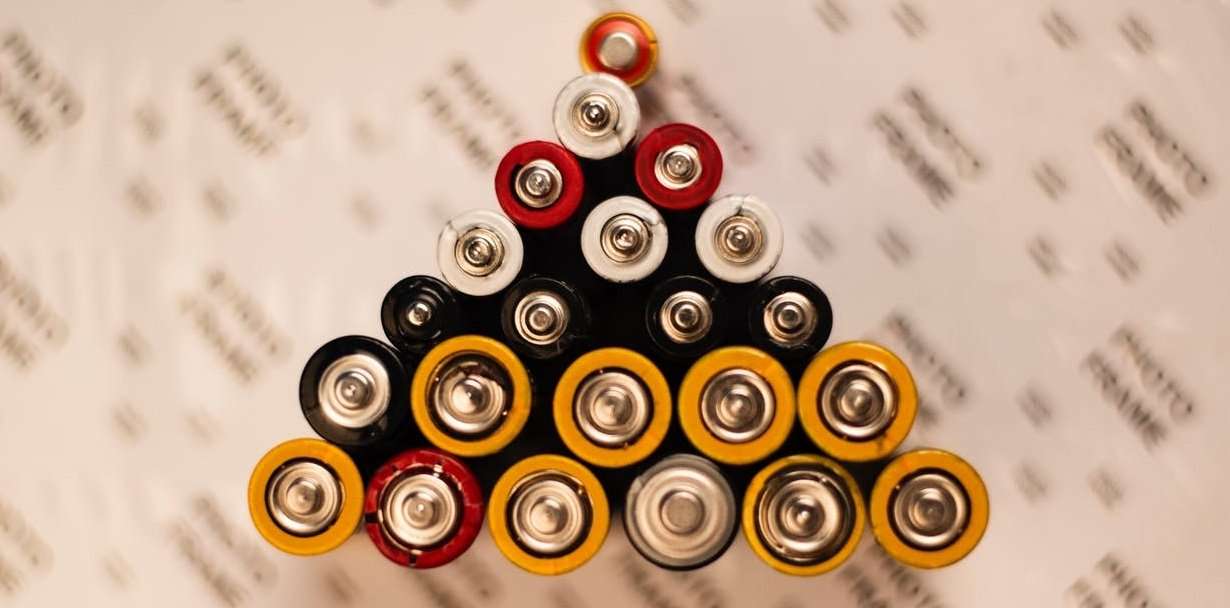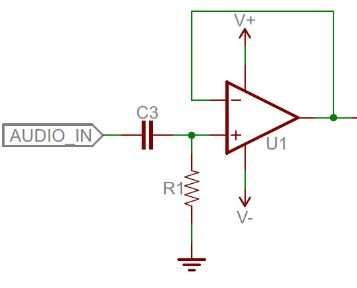The regular alkaline batteries, were prominently labeled “1.5V”, and that putting four in a battery holder got me 6V.
Common mistakes in going about battery selection:
- Not understanding that circuit would draw whatever current it wanted from the battery, as opposed to the battery forcing a given amount of current into the circuit.
- Thinking that motors would draw a fixed amount of current.
- Confusing current and capacity.
- Ignoring the “h” in “Ah”
- Forgetting about a property, such as capacity, as soon as it wasn’t in my face.
A battery stores energy; the “capacity” is how much energy it can store.
Energy is measured in joules, abbreviated J, but it can also be expressed in different units such as watt-hours, abbreviated Wh (for larger quantities, such as residential electricity use, kilowatt-hours (kWh) are used; a kWh is a thousand Wh). This is similar to the way area can be measured in acres or in square miles: there are units specifically for area, such as acres, but you can also arrive at a measure of area by multiplying length by length, to get mile-miles, or the less awkward square miles. (The hyphenation imposed by English grammar does not help matters since the hyphen looks like a minus sign when we are actually multiplying the units together.) Watts and watt-hours are generally good units for electronics since they are easily related to voltage and current and since typical batteries that you can hold in your hand will have a capacity of a few dozen watt-hours.
In the case of a typical battery, where we can assume a constant voltage, we can replace watts with volts multiplied by amps. A 12-volt, 1 amp-hour (abbreviated Ah) battery and a 6-volt, 2Ah battery each store 12Wh, but the voltage is usually a critical parameter for a battery, and once a voltage is selected, the capacity can be specified by the amp-hour rating. The value in using the amp-hour is that it makes explicit our multiplication of rate, the amp, and time, the hour: a battery rated for one amp-hour can provide a current of one amp for about one hour, two amps for about half an hour, or 0.1 amps for about ten hours. I say “about” because the exact capacity will depend on the current.
The current and capacity for a battery are like the speed and range of a car. If your car has a range of about 300 miles, you can go 30 miles an hour for ten hours, or 60 miles an hour for five hours. Your efficiency will get worse with speed, so by the time you go 60 miles per hour, you might run out of gas after only four hours, for a range of 240 miles. Going back to my battery search, looking for a 1-amp battery was like looking for a car with a speed of 60 miles: 60 miles isn’t even a speed, and even if I revised my search to a car that could go 60 miles per hour, it still wouldn’t be a useful specification to look for. Most batteries on the scale I was looking at can deliver one amp, just like most cars can go sixty miles per hour. The maximum available current, like the maximum speed of the car, might be a more reasonable specification to search for, though providing those kinds of specifications might make the respective manufacturers nervous.
It is reasonable, though, to consider the maximum current a battery can safely deliver. That value will depend on all kinds of things, including the chemistry of the battery, but the maximum discharge rate is almost always tied to the capacity. That means that given a particular technology, a battery with double the capacity can deliver double the maximum current. Batteries are often specified with a discharge rate in terms of C, where C is the capacity of the battery divided by hours. For example, for a 2Ah battery, C is 2A. If the battery has a maximum discharge rate of 10C, the maximum current is 20 amps. It’s good to keep in mind that a 10C discharge rate means a battery life of less than 1/10th of an hour, and with the loss of capacity that a high discharge rate generally causes, the battery life would be less than five minutes.
Some example battery capacities
AA batteries
A typical alkaline or NiMH battery in the standard “AA” size has about 2000 to 3000 mAh (or 2 to 3 Ah). With a cell voltage of 1.2 V to 1.5V, this corresponds to 2 to 4 Wh per cell. When multiple cells are used in series, as with the use of a battery holder or most pre-made battery packs, the voltage goes up but the capacity in amp-hours stays the same: an 8-cell NiMH pack made of AA cells will have a 9.6 V nominal voltage and a 2500 mAh capacity. There can be quite a range in capacities depending on the quality of the batteries. For larger cells, such as C and D size, the capacity should go up approximately proportionally to volume, but some cheap units (they’re usually light) can have the same capacity as the smaller cells. Alkaline cells have a more pronounced drop in capacity as the current drawn out of them goes up, so for applications requiring several hundred mA or more current, NiMH cells of the same size could last significantly longer. For low-current applications that need to run for months, alkaline batteries can last much longer because NiMH cells can self-discharge in a few months.
9V battery
9V alkaline batteries can be convenient for their high voltage in a small size, but the energy density (watt-hours per given volume or weight) is the same as other batteries with the same chemistry, which means the capacity in amp-hours is low. In approximately the same size as an AA cell, you get six times the voltage, so you also get about six times less in the Ah rating, or about 500 mAh. Given the high losses incurred from discharging in anything under a few hours, 9V batteries are impractical for most motors and therefore for most robots.
Coin or button cell batteries
Coin or button cell batteries vary in size and chemistry, but you can generally expect 1.5 to 3 volts with a few dozen to a few hundred mAh.
12V, 8Ah sealed lead-acid battery
Lead-acid batteries are popular for larger projects since they are usually the lowest-cost option and are widely available. Sealed lead-acid or gel-cell batteries are available in 6 V and 12 V versions (other multiples of 2 can be found), with the 12 V versions weighing about a pound per amp-hour. 12 V car batteries store a few dozen amp hours, and they weigh a few dozen pounds.
11.1V, 1800mAh Li-Po battery
Lithium-based rechargeable batteries have around double the energy density of alkaline and NiMH batteries by volume and even better improvements by weight. These newer batteries are far less standardized in terms of battery size and shape, but since they are usually intended for applications where capacity or maximum battery life are important, these batteries usually have their voltages and capacities prominently labeled.













